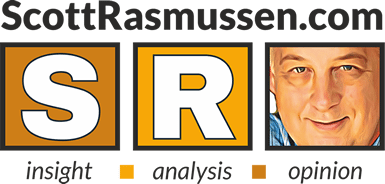Twenty-eight percent (28%) of voters nationwide say their own personal finances are getting better. A Scott Rasmussen national survey found that 21% take the opposite view, saying their finances are getting worse. Forty-nine percent (49%) say their finances are remaining about the same, while 3% are not sure.
Those numbers are essentially unchanged from a last month suggesting that the recent trend of growing confidence has stalled.
Looking back, confidence fell significantly between the election and January. Then, it improved significantly during the early months of this year. By last month, perceptions of personal finances finally surpassed the pre-election levels of confidence.
The general trends match perceptions of the coronavirus pandemic. The number believing the worst was behind us grew dramatically from last November to early March. The numbers have remained steady since that time.
The survey also found that:
- 32% rate the U.S. economy as good or excellent, another 24% say poor (up from 27%/27% last month).
- 34% believe the economy is getting better, while 35% say worse (up from 29%/38% last month).
- 49% rate their personal finances as good or excellent, 14% say poor (little changed from 47%/14% last month).
SIGN UP to receive Scott’s free email newsletter.
CHECK OUT Scott’s latest polls.
Note: Neither Scott Rasmussen, ScottRasmussen.com, nor RMG Research, Inc. have any affiliation with Rasmussen Reports. While Scott Rasmussen founded that firm, he left more than seven years ago and has had no involvement since that time.
Methodology
The survey of 1,200 Registered Voters was conducted by Scott Rasmussen using a mixed mode approach from April 15-17, 2021. Field work for the survey was conducted by RMG Research, Inc. Most respondents were contacted online or via text while 261 were contacted using automated phone polling techniques. Online respondents were selected from a list of Registered Voters and through a process of Random Digital Engagement. Certain quotas were applied, and the sample was lightly weighted by geography, gender, age, race, education, internet usage, and political party to reasonably reflect the nation’s population of Registered Voters. Other variables were reviewed to ensure that the final sample is representative of that population.



